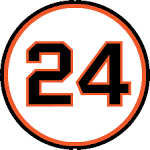Decimal To Binary Converter
Convert Binary to Decimal and Decimal to Binary | Bestool 24
In the world of computer science and mathematics, the conversion between binary and decimal numbers is a fundamental concept. Understanding how to convert binary numbers to decimal and vice versa is not only essential for computer programmers and engineers but can also be a valuable skill for anyone interested in the inner workings of digital systems. In this article, we'll dive deep into the process of converting binary to decimal and decimal to binary, providing you with clear explanations and practical examples.
1. Understanding Binary and Decimal Systems
Before we delve into the conversion process, let's establish a foundational understanding of binary and decimal systems. The binary system is a base-2 numeral system, which means it uses only two digits: 0 and 1. On the other hand, the decimal system, also known as the base-10 system, uses ten digits: 0, 1, 2, 3, 4, 5, 6, 7, 8, and 9.
2. Converting Binary to Decimal
Binary to Decimal: The Basics
Converting binary numbers to decimal is relatively straightforward once you grasp the concept. Each digit in a binary number represents a power of 2, starting from the right and increasing by one for each digit to the left.
Binary to Decimal: Step-by-Step Process
1. Start from the rightmost digit (the least significant bit) of the binary number.
2. Assign a value of 1 to the rightmost digit.
3. For each digit to the left, double the previous value.
4. Multiply each digit by its corresponding value (0 or 1) and sum up the results.
5. The sum is the equivalent decimal value.
3. Converting Decimal to Binary
Decimal to Binary: The Basics
Converting decimal numbers to binary involves the reverse process. You need to find the binary representation of a decimal number.
Decimal to Binary: Step-by-Step Process
1. Start with any decimal number you want to convert.
2. Divide the number by 2 and note the remainder.
3. Continue dividing the quotient by 2 until you reach 0, noting remainders along the way.
4. The remainders, read from bottom to top, form the binary representation.
4. Practical Applications
Understanding binary and decimal conversion is essential in various fields, including computer programming, data analysis, and digital electronics. It allows professionals to work with binary data efficiently and helps in tasks such as coding, debugging, and data manipulation.
5. Benefits of Knowing Binary and Decimal Conversion
Knowing how to convert between binary and decimal numbers offers several advantages. It enhances problem-solving skills, facilitates data interpretation, and enables better comprehension of computer architecture.
6. Common Mistakes to Avoid
When performing binary-to-decimal and decimal-to-binary conversions, be cautious of errors such as misinterpreting binary digits, miscalculating powers of 2, or neglecting leading zeros in binary representations.
7. Tips for Quick Conversion
To speed up the conversion process, practice mental calculations, and become familiar with common binary patterns. Additionally, using online converters or calculators can be a quick solution for complex conversions.
8. Conclusion
In this article, we've explored the essential concepts of converting binary to decimal and decimal to binary. These skills are invaluable for anyone interested in computer science or digital systems. By mastering these conversions, you'll have a solid foundation for more advanced topics in the world of computing.
9. Frequently Asked Questions (FAQs)
Q1: Can I convert any binary number to decimal using the step-by-step process?
Yes, the process we've outlined works for converting any binary number to decimal.
Q2: Is there a shortcut for converting large binary numbers to decimal?
While mental math can be useful, for large binary numbers, using a calculator or software is more efficient.
Q3: Are there real-world applications for binary-to-decimal conversion?
Yes, many real-world applications involve binary-to-decimal conversion, including digital signal processing and computer networking.
Q4: How can I check if my binary-to-decimal conversion is correct?
You can verify your conversion by reversing the process and converting the decimal result back to binary. It should match the original binary input.
Q5: Where can I learn more about advanced binary and decimal concepts?
You can explore online resources, textbooks, and computer science courses to deepen your knowledge in this area.
In this age of digital technology, understanding how to convert binary to decimal and decimal to binary is a valuable skill. Whether you're a computer enthusiast, a programmer, or simply curious about the inner workings of computers, mastering these conversions opens up a world of possibilities. So, take the time to practice and explore the fascinating realm of binary and decimal systems.







